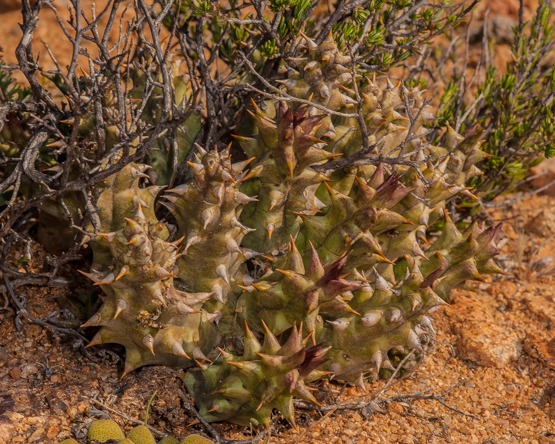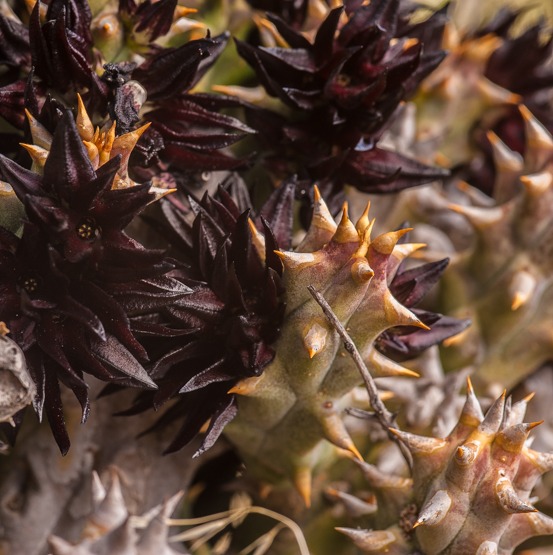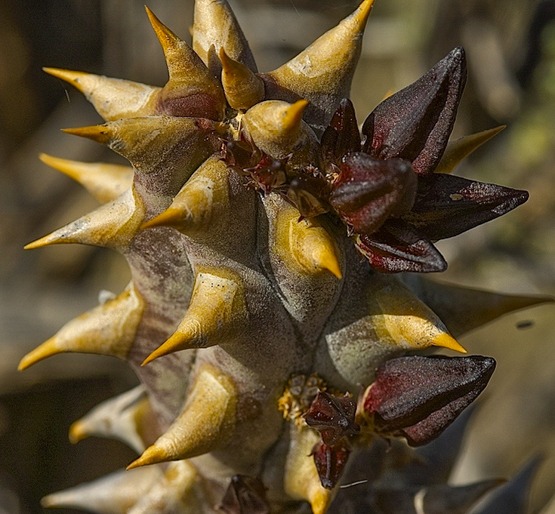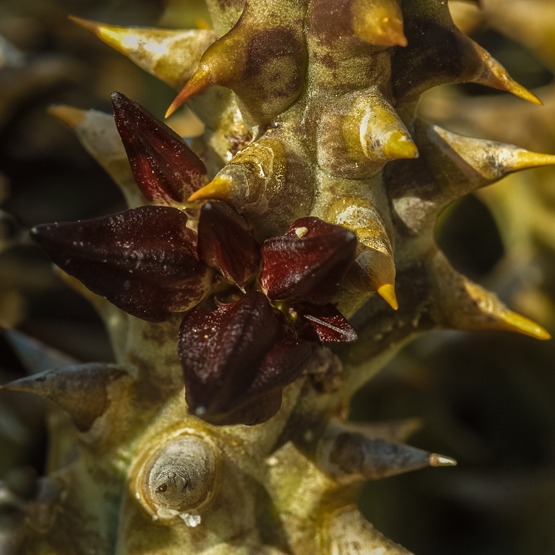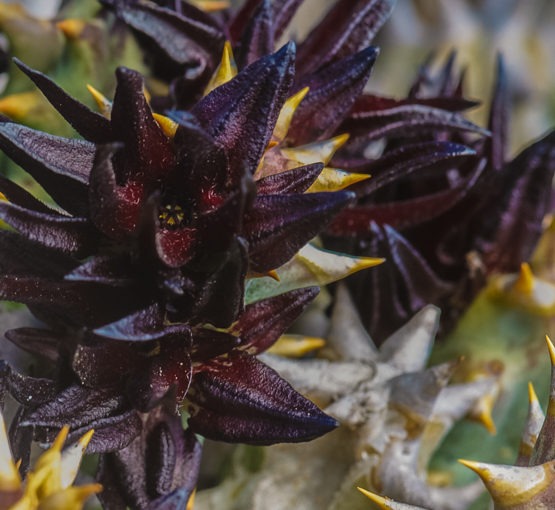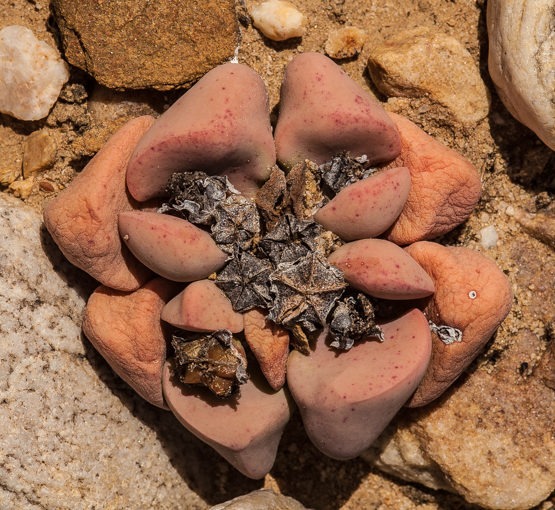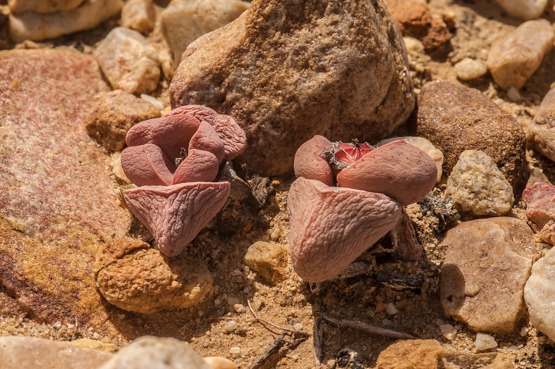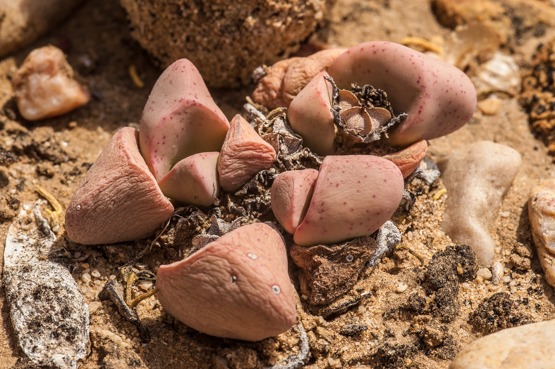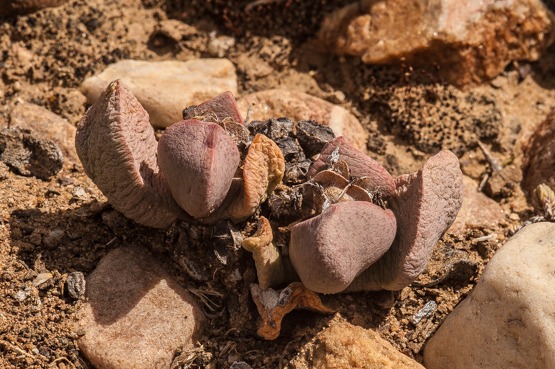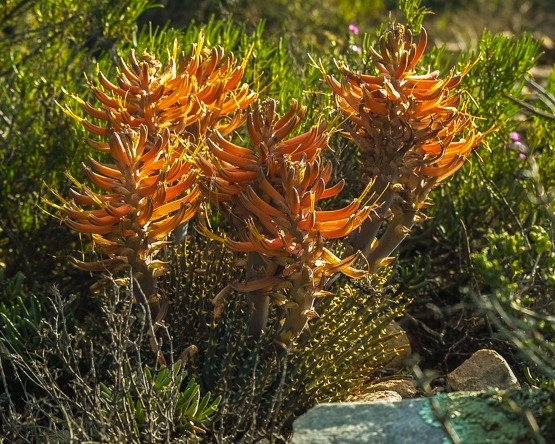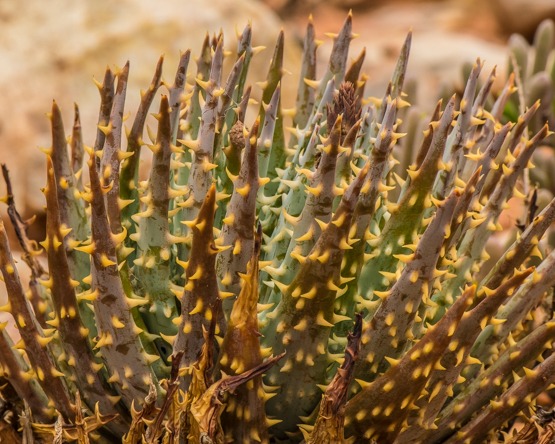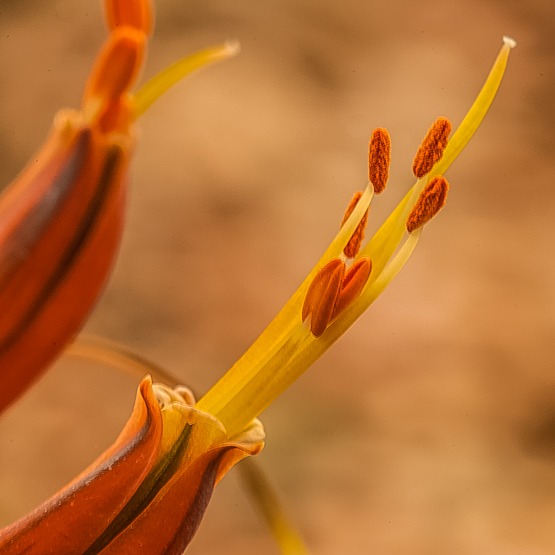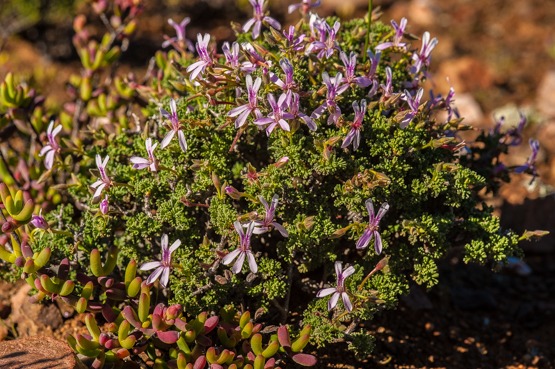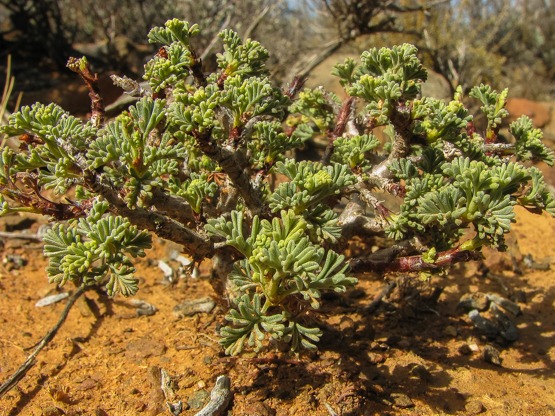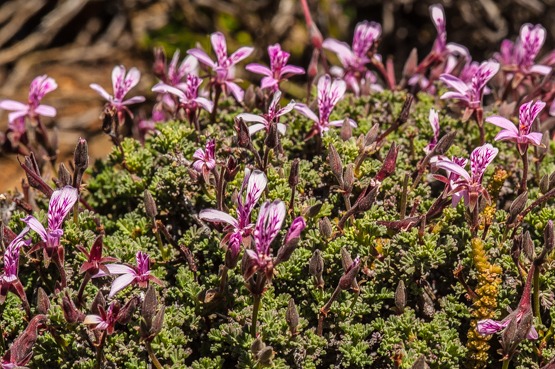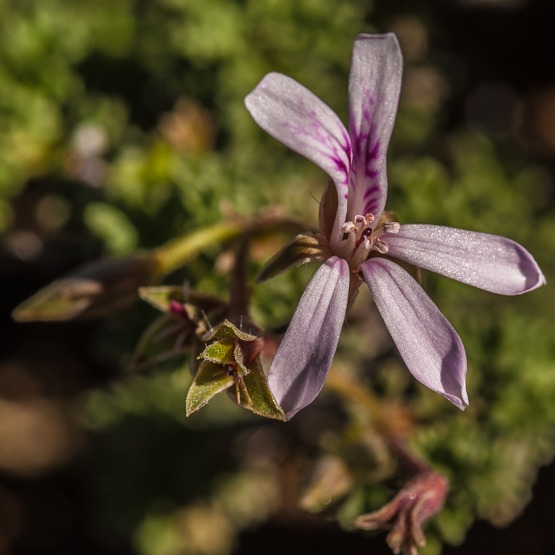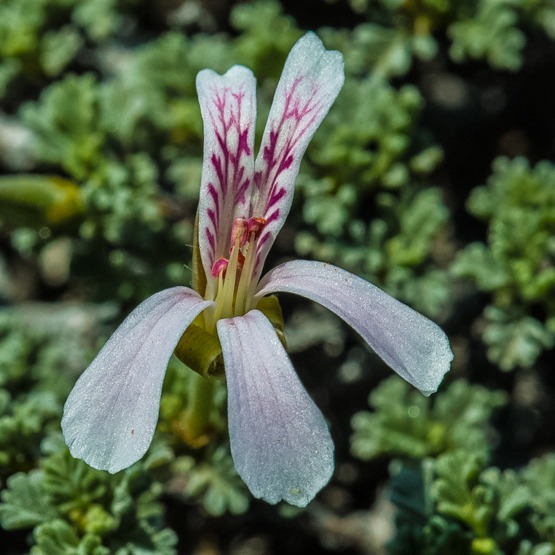Of all species of Quaqua, this is the one with the widest distribution and also probably the best known.
The plants form vigorous clumps of up to 60 cm tall and wide.
Even when not in flower, the plants are usually easily recognised by their size and the hard, yellow-brown spines. The flowers appear in March-June and emit a very unpleasant smell.
Occurring in a great variety of habitats from southern Namibia to Rietbron in the Great Karoo and Oudtshoorn in the Little Karoo.

